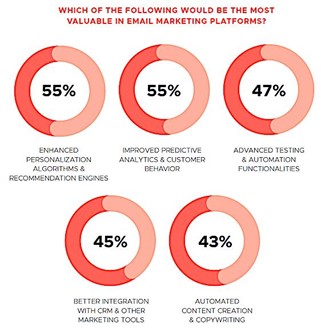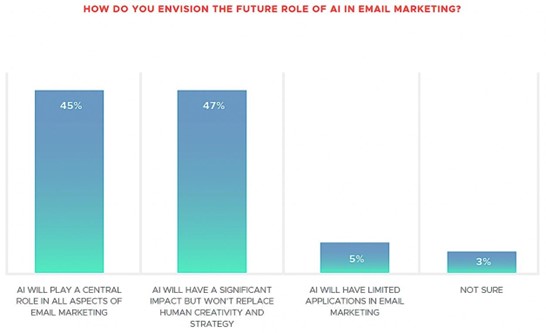What are your big rocks for 2024?
How does anybody have time to read this article right now? We are in the throes of Q4, the busiest time of the year! But if you’re thinking, “Eh – I have a little time right now,” I’ll do my best to make this worthwhile.
My last OI column of the year comes out at a time when everyone is busier than all-get-out. Either you’re deep into your holiday plans, or you’re about to push the Big Button that kicks the email machine into Insane Mode, or you’re in the middle of end-of-year activity.
|
Note: The Author of this blog post, Ryan Phelan (RPE Origin), will be leading a discussion on this topic during the OI-members-only Live Zoom on Thursday, January 4, 2024. OI members -- see you there! Not a member? Join today -- or reach out to Jeanne, our general manager, to learn more. |
No matter what you’re cranking on right now, if you’re anything like I was back in my retail email days, you might be saying to yourself, “I’m getting it done this year, but I have no clue about what to do for next year.”
If that’s you, take a little time to read through my column for tips to help get ideas flowing. But also, bookmark those things you come across now so you can go back and address them in 2024 when the frenzy fades and you’re fresh for the task.
Thinking strategy before tactics
This is one of my overarching principles. Strategy comes before tactics. You have to know the “why” of a plan before you can come up with the “how.” But I know why marketers default so often to tactics – because they’re easy.
Strategy, and strategic planning, can be hard. It takes time and buy-in. But it’s important to have a strategy because it will help us use the right tools to get where we want to go and help us know where to spend our budget money to get the results we want.
In the email marketing industry as a whole, we were evolving to that point a few years ago, where we would think of strategy first and come up with tactics to carry it out, instead of grabbing at tactics and figuring out how to fit them into our program.
I could see it in conversations with clients and with other email marketers. We were starting to think about why we needed an abandoned-cart program before looking at the automation that would drive that program.
Then along came COVID-19, and we pitched strategy out the window. We had to put our energy into pivoting our email programs and just getting things done. Nobody had time to think about strategy.
Today, almost four years later, we haven’t gotten back to our strategic basics. We’re still locked into tactical thinking, whether it’s to head off changes in the economy, deal with lingering shortages, or appeal to increasingly fickle customers.
It’s time to move past this “git-‘er-done” outlook.
Maybe not today or tomorrow. Maybe not even anytime this year unless December is a quiet month for your company. But in 2024, you can take time to think about how you can move your business needle, how exhausted your marketing team is, or how exhausted your tactical approach is.
This will be the time to take a step back and develop a strategic approach for your email program. Right now, what can you do to have a strategy in your process?
Let big rocks guide 2024 strategic planning
Schedule some meeting time with your team, maybe three 1-hour meetings, or a 2-hour workshop, to think about your goals and the strategy you need to achieve them.
As part of this workshop, ask your team to name the “big rocks” in your strategy. This refers to a formula made famous in The Seven Habits of Highly Effective People by Stephen R. Covey.
A project is like an empty jar. First, you fill it with the big rocks, which are your goals. Then you add the smaller rocks, which make up the strategy you’ll use to achieve the goal. Then you add sand – your tactics - to fill up the jar and complete the project. If you start with sand, you won’t have room for the big rocks. In the same way, if you start with tactics, you won’t leave room for strategic thinking.
What could these big rocks look like?
Yes, you have your ideas about what we could change in our programs. But when outlining your strategy, you have to break it up into parts that include what you’re doing today for promotional, transactional, and journey emails, along with marketing automations.
The new components you want to add have to be part of your strategic focus.
As you do this strategic thinking, you’ll be better off to go old-school and write everything on whiteboards – what you plan to focus on, and what you expect to change. What do you think will move your needle this year in both theory and practice?
This method gets you out of the “do it now” mindset and moves you back into planning mode. It’s planning that focuses less on “How will I get this done?” and more on “This must get done.” That will help you look at both the “why” and the “how” to accomplish a necessary goal.
2024 will be rooted in change
This will be even more crucial in the coming months because 2024 will be a year of change, not just in new technology coming out but also in our own programs. We have reached our limit on email volume. Sending more email to achieve a goal is no longer productive.
Sure, you can say “Increase volume to increase revenue.” But customer sentiment is turning against that strategy. Customers are looking for smarter email, not more email.
If your strategy for 2024 centers on “send more email,” that’s the wrong idea.
What are some potential changes for 2024? Here are several:
1. Generative AI
This has been a hot topic all year here on OI and a recurring theme in our Thursday membership calls. Huge props to OI General Manager Jeanne Jennings for arranging those calls. They are a great forum for us to talk through our ideas – what works and what doesn’t – and to toss around new ones.
At the top of your list for 2024 is what you will do with generative AI and your strategy for using it to achieve your goals for the year. What are you doing now? How will you expand or improve your use of it? How will you incorporate the updates and evolutions of AI in general and generative AI in particular that are coming out in the technology marketplace?
The study that RPE Origin and Ascend 2 released recently (get the free ungated report) has two findings that could jumpstart your planning for 2024:
Wishlist for AI capabilities (Page 19): We asked marketers at enterprise-level companies about the AI functions they would like to see in their email marketing platforms. Here’s what they told us.

Source: 2023 AI in Email Marketing Research Report
Role of AI in email marketing (Page 21): We also asked these marketers to evaluate how important AI will be in their email marketing efforts. The result here indicates that your top-level competitors see it as essential in all aspects of their email activities and not just as a tactical tool, like using ChatGPT to write subject lines.

If you’re still thinking, “Oh, I don’t need to think about AI yet,” you’re in the minority. AI is here. It’s being developed. People are using it.
In conversations with ESPs, my team and I have learned that many of them are coming out with ideas that will support these wished-for capabilities. Some will be half-witted efforts to look good in a sales pitch. But others will be serious, value-driven applications of AI that you can use to carry out your strategic planning.
I also expect we will see smaller technology companies come out with niche solutions. It all comes down to you being educated and knowing what’s happening in the marketplace.
Before you start your strategic planning, ask your ESP to brief you on their 2024 vision and timing roadmap for AI and generative AI. You’ll need this inside information so you can bring it up in your planning to indicate what’s coming from our ESP and how your team could implement it.
Let that be your guide. If it costs more, you will need to line up funding. But I sense many functions will get included in your contract because your ESP will want widespread adoption.
Back when I worked for an ESP, we would discuss our new technology innovations with Shar VanBoskirk of Forrester. Her question every time was “How are people using it?”
That’s also my first question. Having the technology isn’t enough. We need to think through how people will use it. From a cost perspective, I foresee ESPs will include many AI technologies to expand adoption.
When you reach out to your ESP, if your rep says, “I don’t know,” or they just list topics, refer to the graphic above showing what capabilities marketers want in their platforms. Does your ESP’s plan track with this wish list? Does your ESP keep the end user in mind? Or are they looking for sizzle in a sales pitch?
As I said before, you have to educate yourself about your ESP’s plans and what’s happening in the marketplace. This can happen in the strategic-planning part of your brain. Your tactical brain is just looking to get stuff done.
2. Reconnecting with customers
Beyond AI, we need to get smarter about how we connect with our customers. When was the last time you checked in with marketing about your demographics? What motivates them? What are the reasons to believe in your brand and your products?
How long has it been since you had a meeting on this basic but essential information – and you actually listened to the presentations? I know these meetings can go on forever, but you need this information so you can focus on whom you’re marketing to now, who your end users are, and why they buy your products.
All of this data is connected and can be used to drive new programs or to tweak the programs you already offer. You can use it in your segmentation plans, your message, and production selection. You can even use it to find ways to elevate your email marketing from basic to sophisticated through personalization, dynamic content, and more.
Wrapping up
I know you’re focusing on getting everything done for 2023. How can you get to the other side of your shipping deadlines so you can rest and not have people walk through your door, hang over your cubicle, or Slack you and demand another last-minute email campaign because they aren’t making their numbers for the year?
It happens every year. And it’s probably happening earlier and earlier now that we are kicking off holiday campaigns earlier and earlier.
At a certain point, you have to be exhausted from all that. Doing this monotonous execution of email marketing, not knowing when it will end. This is why we have to talk in 2024 about making radical changes in how we do email marketing.
We’ve seen changes coming from Yahoo and Google on how they consider inbox placement. It’s time to realize that content, connection, and end product matter. Change has to be our goal for 2024. Stagnation is over.
Whether it’s AI or optimization of a new program, or you’re a one-person team and one small change is all you can effect, at least you did something. We all need to do something radically different, rapidly, and effectively.
One thing won’t change, though – we won’t let the zombies win!
 Photo by Jessica Castillo on Unsplash
Photo by Jessica Castillo on Unsplash

 How to resolve AdBlock issue?
How to resolve AdBlock issue? 
 Ryan Phelan is Managing Director of RPEOrigin.
Ryan Phelan is Managing Director of RPEOrigin.